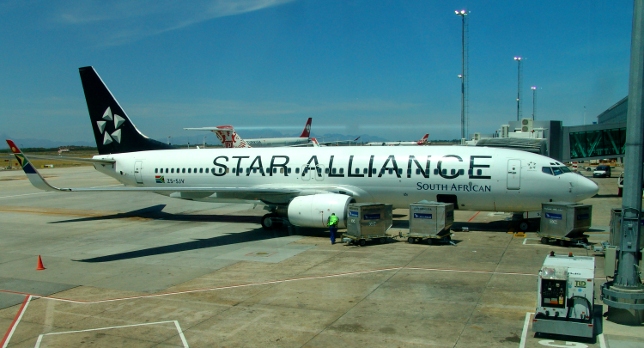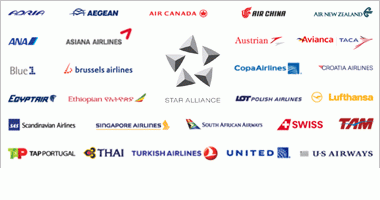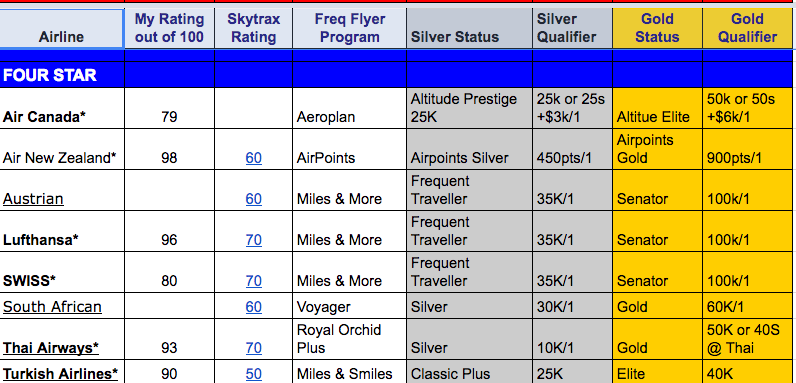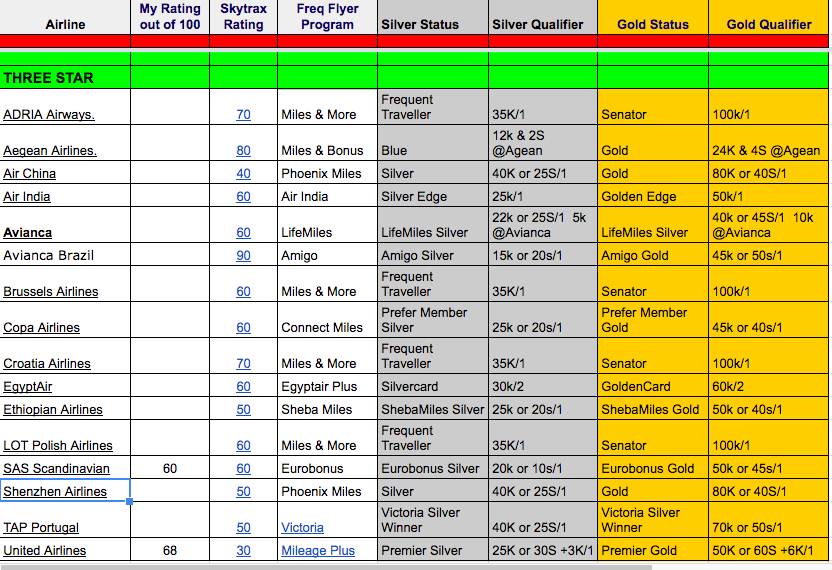 Chances are you have seen The Star Alliance symbol on aeroplanes, airline check-in counters, airport lounges or Boarding Passes. Started by just five airlines 20 years old this week, it is the biggest of the six major airline groupings across the world.
Chances are you have seen The Star Alliance symbol on aeroplanes, airline check-in counters, airport lounges or Boarding Passes. Started by just five airlines 20 years old this week, it is the biggest of the six major airline groupings across the world.
The Six Major Airline Alliances
These groupings of airlines share sales office, ground support and lounges, code share flights and jointly market their products. The benefit for us, is that the Alliance allows customers to get similar reciprocal benefits across the airline members. By size the alliances are:
- Star Alliance has 27 member airlines (of which I have flown ten)
- One World with 14 members (of which I have flown 12)
- Sky Team with 20 members (of which I have flown six)
- Value Alliance with 8 Low-Cost Carrier members (I’ve flown five)
- U-FLY Alliance, also a low-cost consortium with just five Asian airline members (none of which I have flown)
- Vanilla Alliance made up of five Indian Ocean airlines, none of which I have travelled with
Star Alliance Stats
The Star Alliance’s 27 airline companies now connect 1300 destinations with 4500 planes. Last year the Star Alliance airlines combined carried close to 700 million people including me, multiple times!

Five Star Airlines
Four of the Star Alliance carriers are ranked Five Star Airlines by Skytrax: ANA, Asiana, Eva Airways and Singapore Airlines. Interestingly, all of these carriers are based in Asia. This tally of four is more than One World’s two Five Star members (Cathay Pacific and Qatar) and way ahead of Skyteam’s single five Star member (Garuda).
Skytrax states that five-star airlines have “the highest standards of Airport and Onboard Product provided by an airline to customers, together with consistent and high standards of front-line staff service across the airport and onboard service environments”. I am a little cynical of the Skytrax ratings (why is Etihad five star and Emirates four star, for example) but these four carriers are highly respected by critics and customers. Skytrax customers have rated each of these carriers 80%. I have flown only flown Singapore out of this grouping (multiple times).
Four Star Airlines
Eight come in at a Skytrax four-star ranking, which means they are considered by Skytrax to be a “Good Airline”. I have flown six of those eight (marked*):
- Air Canada*
- Air New Zealand* -always a real joy to travel with. They are five star for me.
- Austrian
- Lufthansa*
- SWISS*
- South African -Although, I have come close to flying SAA, it has never happened
- Thai Airways*
- Turkish Airlines*

Three Star
The remaining 15 Star Alliance members are considered to be three-star airlines by Skytrax which can be described as “fair”. I think what Skytrax really mean is “average“! There is a reason why I have avoided flying most of these carriers!
- ADRIA Airways.
- Aegean Airlines – apparently deliver the best product of these three star lines
- Air China
- Air India
- Avianca
- Avianca Brazil
- Brussels Airlines
- Copa Airlines
- Croatia Airlines
- EgyptAir
- Ethiopian Airlines
- LOT Polish Airlines
- SAS Scandinavian Airlines*
- Shenzhen Airlines
- TAP Portugal
- United Airlines*
Frequent Flier
Each of the member airlines has some form of frequent flyer program which slot into a Star Alliance Tier system to allow consistent reciprocity across carriers. There are two tiers at which airlines are expected to provide roughly the same level of service. Some carriers have quite complicated tier within tiers which offer slightly varying opportunities.
Star Alliance Tiers
The two tier levels are:
- Star Alliance Silver
- Star Alliance Gold
Frankly, the real meat is Star Alliance Gold which provides the most useful range of benefits. I would not work hard to earn or keep Silver as demonstrated below.
Priority Airport Check-in, lounge access and priority security and immigration are the real prizes for me.
Confusingly some Star Alliance member airline market a massive variety of names for their equivalent of Star Alliance Silver or Gold.
How to Get to Gold
Getting to the Holy Grail of Gold varies from airline to airline as demonstrated in this linked table (excerpt below).
Some carriers require a passenger to earn a certain number of miles in a time period of one or two years. For example, Singapore requires a would be Gold member to fly 50,000 miles in one year whereas South African requires them to have flown 60,000 miles in one year. Lufthansa it at a much higher 100,000. Aegean Airlines‘s Gold level equivalent earning level is a mere 24,000 miles in a year but you must also complete four flights on Aegean. Tricky as most of their flights are short hops around the Mediterranean!
Or an airline may require a customer to fly a certain number of flights (segments) with a Star Alliance carrier. For example, Thai gives a passenger the option of 50,000 miles or 40 flights with Thai Airways.
United and Air Canada require customers living in the airline’s home country to spend a minimum level of dollars before you can reach the higher tier.
Choosing a Frequent Flyer Program
It is usually best to stick to one major Frequent Flyer Program to ensure you can achieve and maintain that magic Gold level. Choosing the most appropriate program will depend on five things:
- Where you fly the most.
- How many miles you intend to fly. If you only intend to fly two or three domestic hops a year, look for a frequent flyer plan which gives you the best choices for an occasional award flight. If you plan to travel internationally every month, then that means you really want to maximise the opportunity to earn the highest level
- What class you usually fly at- some airlines reward Full Economy at a very different rate to others. I use Where to Credit to compare how generous or stingy different airlines are
- Which Credit Card(s) you intend to use
- How often you intend to buy and use those bought miles. For example, Avianca has one of the most generous mileage purchase programs.
- So it is a no-brainer for someone living in the USA with a credit card linked to United Airlines who is mostly flying United Business Class.
- If the USA customer mostly flies to Europe in Coach, they may want to consider a Lufthansa membership
- An Australian (where there is no Star Alliance carrier) who is mostly travelling around Asia may select Singapore or Thai.
- A UK customer splitting their time between North America and Europe may choose Lufthansa or TAP
- If you are aiming just for Silver level, then a Thai Airways membership will get you there faster.
- Copa only requires a customer to earn 45,000 miles in a year
Which airline alliance do you focus on and which airline membership is your focus?
To Celebrate their 20, Star Alliance are giving 21 people the chance to win a million Frequent Flyer Programme. To enter, use their photo app to upload a favourite cultural experience, and explain why it is special. Good luck!
Related Posts





Leave a Reply